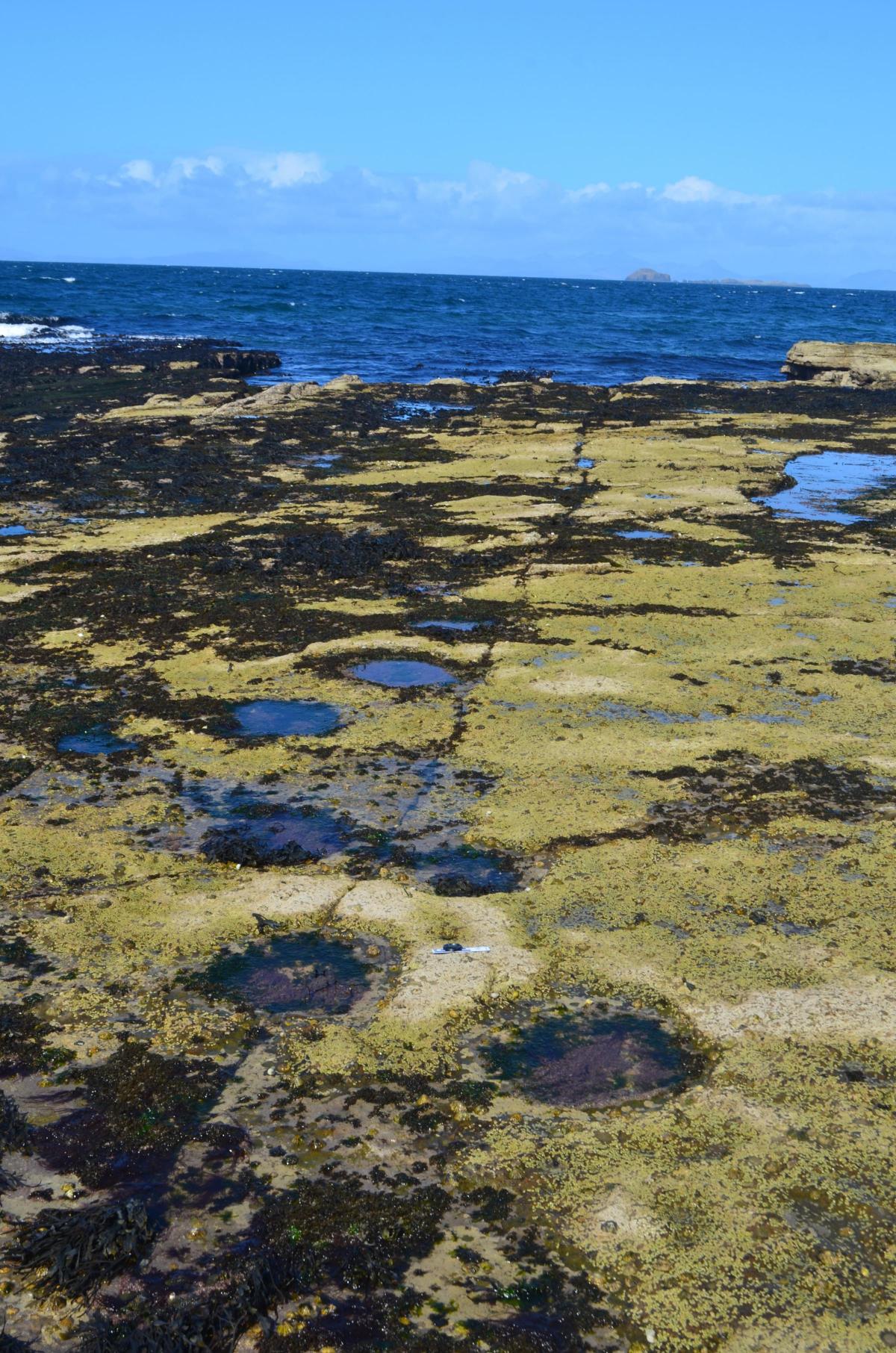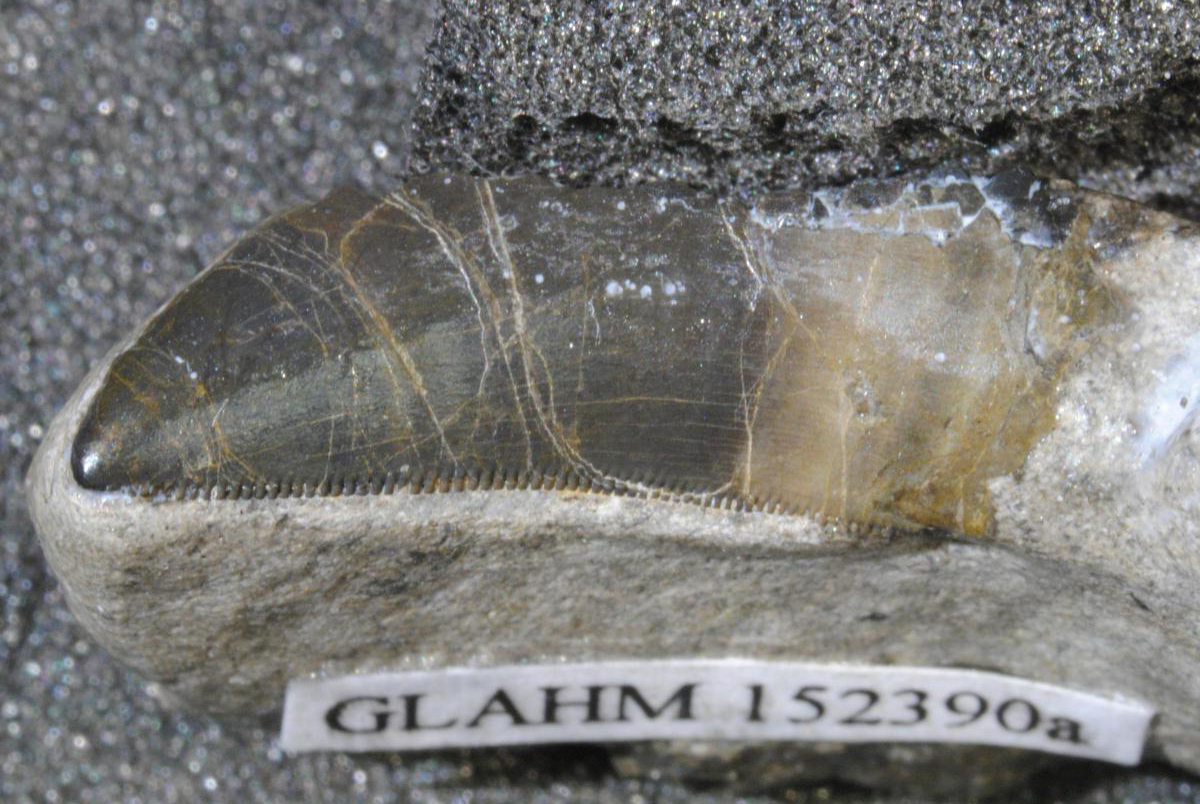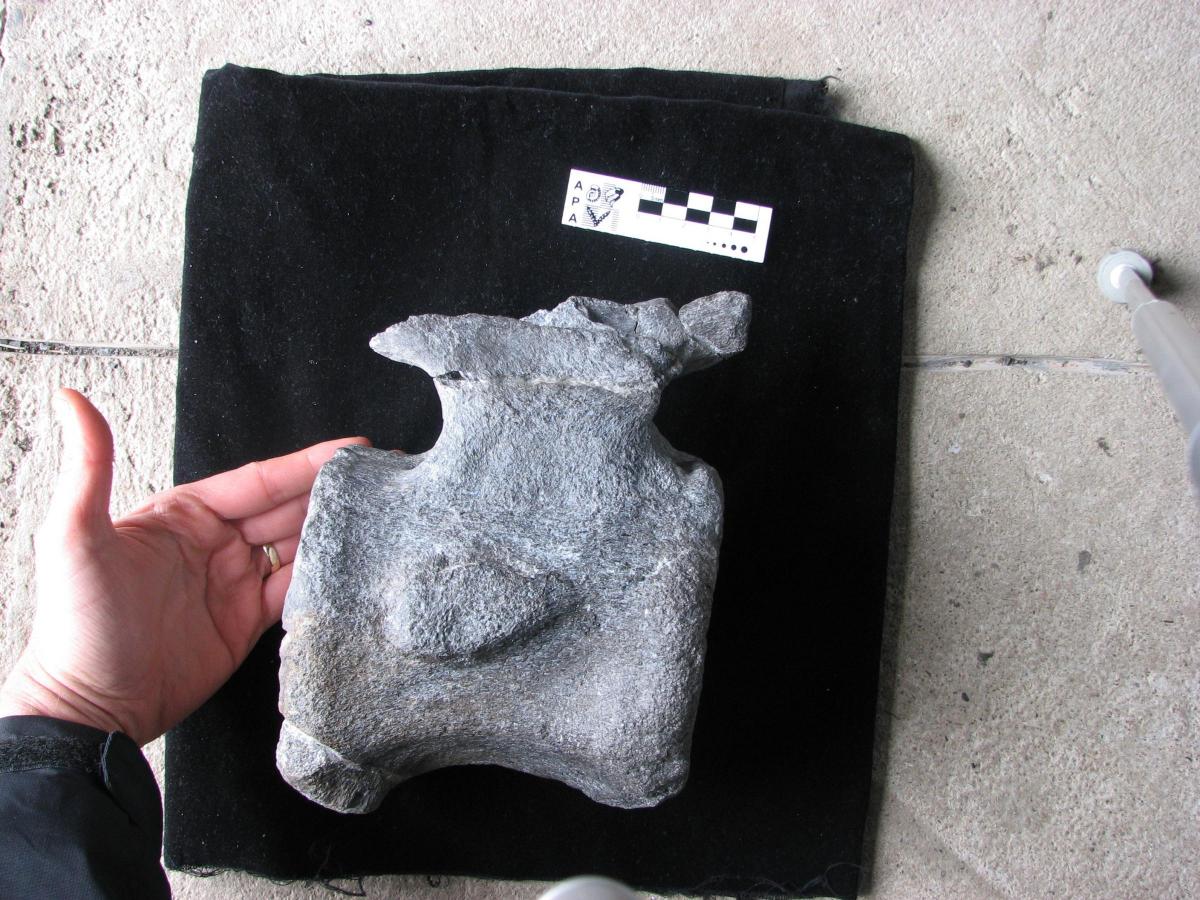DINOSAURS IN SCOTLANDThere were dinosaurs in Scotland – not just the kind on the gasoline signs or the birds we see today that are now classified as dinosaurs, but the good old fashioned kind, whose bones we see the in museums around the world (excluding of course, birds. Although it is often maintained that people have never been killed by dinosaurs, that is true only if you ignore the birds (such as ostriches and emus) that have in fact killed people. Although dinosaurs have often been called “extinct” and “evolutionary failures”, such is hardly the case. Dinosaurs first appeared some 230 million years ago. Between then and the great dinosaur extinction 66 million years ago, many different species of dinosaur became extinct. Many, like the stegosaurs vanished perhaps 150 million years ago - long before the major extinction event. Many dinosaur species often depicted together (like the stegosaur and tyrannosaur that fight in Walt Disney’s Fantasia) never saw one another. So there are many misconceptions about dinosaurs and as a result, research among these incredible animals is crucial. The fact that dinosaurs evolved and changed from one form into another and the only surviving members of the group are birds, hardly makes them an “evolutionary failure” or totally extinct. After all, people cannot be considered an “evolutionary failure” because many of the earlier forms are no longer with us. The Homo erectus forms and Homo habilis forms, for example, are no longer around and humans have now been reduced to a single species – Homo sapiens. However, when most people think of dinosaurs, they tend to think of the huge animals like the Tyrannosaurus rex, or the stegosaurs, triceratops and apatosaurs, and not the canary or the sparrow. Scientists now talk about “non-avian” dinosaurs when referring to those dinosaurs which were NOT classified as “birds” or when they mean those dinosaurs that lived during the Mesozoic era that lasted from 252 million years ago until 66 million years ago. The Mesozoic era is divided into three main periods, the Triassic (252-208 million years ago), the Jurassic (201-146 million years ago) and the Cretaceous (146-66 million years ago). These are the times when “dinosaurs ruled the Earth” and it is these dinosaurs we are looking at in Scotland here. One should also be cognizant of the fact that dinosaurs (which are reptiles) are not the only reptiles around at that time. There are flying reptiles called “pterosaurs” and ocean going reptiles known as “ichthyosaurs” and “plesiosaurs” which are popularly sometimes referred to as dinosaurs, but they are not. Some very important finds of these animals have occurred in Scotland as well. In fact, recently, a 170 million-year-old pterosaur fossil was found on Skye and was called “the world's best-preserved skeleton of the prehistoric winged reptile”. The find dates to the Jurassic period and the animal has a 2.5 meter (8.2 foot) wingspread that makes it the largest of its kind from that period. Although later forms for the late Cretaceous, like Quetzalcoatlus, had a wingspan the size of a small airplane (10 – 11 meters or 33-36 feet!), it was not know that Jurassic flying reptiles had reached the size of the one on Skye. A uniquely Scottish Ichthyosaur (Dearcmhara shawcrossi), has also been found on Skye, as have bones from small crocodiles. One has to remember that the temperature of the world in the Mesozoic was significantly warmer than it is today. Research indicates that during the middle of the Cretaceous period (~100 million years ago) the mean-temperature on the planet's surface was between 6 and 12 degrees higher than it is today. The annual mean temperature in the Arctic would have been about 10 degrees, which is about 20 degrees warmer than today. The geography of the world was changing then even as it is now. Continents move apart, crash together and separate. New lands appear and old ones disappear. The Great Glen fault started when the Laurentian and Baltic tectonic plates collided some 430-390 million years ago. Erosion along the fault during the Quaternary glaciation, which began some 2.58 million years ago, formed Loch Ness. Since the Loch didn’t form until tens of millions of years after the Mesozoic ended, it is highly unlikely the our friendly (albeit recently missing) Loch Ness monster is a holdover from the age of the dinosaurs! While dinosaur fossils have been found in Scotland for quite some time, there have been an amazing number of finds in the last 5 or 6 years. It is not uncommon for people with interests in fossils to become fossil hunters. Many are teenaged and take great pride in their ability – not only to find fossils but also to describe them and even make homes for the fossils. Such a youngster was Dugald (Dugie) Ross from Ellishadder on Skye. Ross had found some Bronze Age artifacts when 15 and this sparked a life long interest in the history (and prehistory) of his island. His name kept coming up in research being done by Dr. Steve Brusatte, an American paleontologist now at the University of Edinburgh, who visited Dugie and discovered he had “founded” a small museum when he was fifteen which contained many dinosaur fossil he had found on his home island of Skye. Making use of Dugie’s years of knowledge and xperience, Dr. Brusatte and his colleagues began their exploration of the isle. Field trips led to finds of many bones and tracks of the prehistoric fauna. Dinosaur footprints had been found on the Isle of Skye. For some time, Skye was the only place in Scotland where such footprints had been found. These were tracks left by “sauropod” dinosaurs – large animals that walked on four legs like the apatosaurs (earlier called brontosaurs).  foot prints Now, other dinosaur fossils have been found on Skye including a theropod dinosaur tooth. Theropod dinosaurs are typically bipedal flesh eating dinosaurs, the most popular of which is probably the Tyrannosaurus rex. They are also the group of dinosaurs from which the birds are thought to have evolved.  In addition to the teeth, a sauropod tail bone was also found on Skye  Recently Dr. Neil Clark, vice-president of the Geological Society of Glasgow, discovered dinosaur footprints at an undisclosed coastal location near Inverness. (It is not unusual for paleontologists to conceal the actual sites where important materials are found to keep fossil hunters away who might dig up the materials and destroy critical information). Significantly, these are the first footprints of dinosaurs found on the mainland of Scotland. While Scottish dinosaurs are known largely from their footprints, just a few years ago, Dr Elsa Panciroli was on Eigg when she discovered the limb bone of a stegosaurian dinosaur. Previously, dinosaur bones in Scotland had been found only on Skye, so the finding of a bone from something like a Stegosaurus was a remarkable find. The dinosaur finds and finds of related reptiles in Scotland have been remarkable in many ways, expanding knowledge of these fascinating creatures. Hopefully we will hear about more finds of equal interest in the near future. All photos are from Steve Brusatte who is presently at the University of Edinburgh |